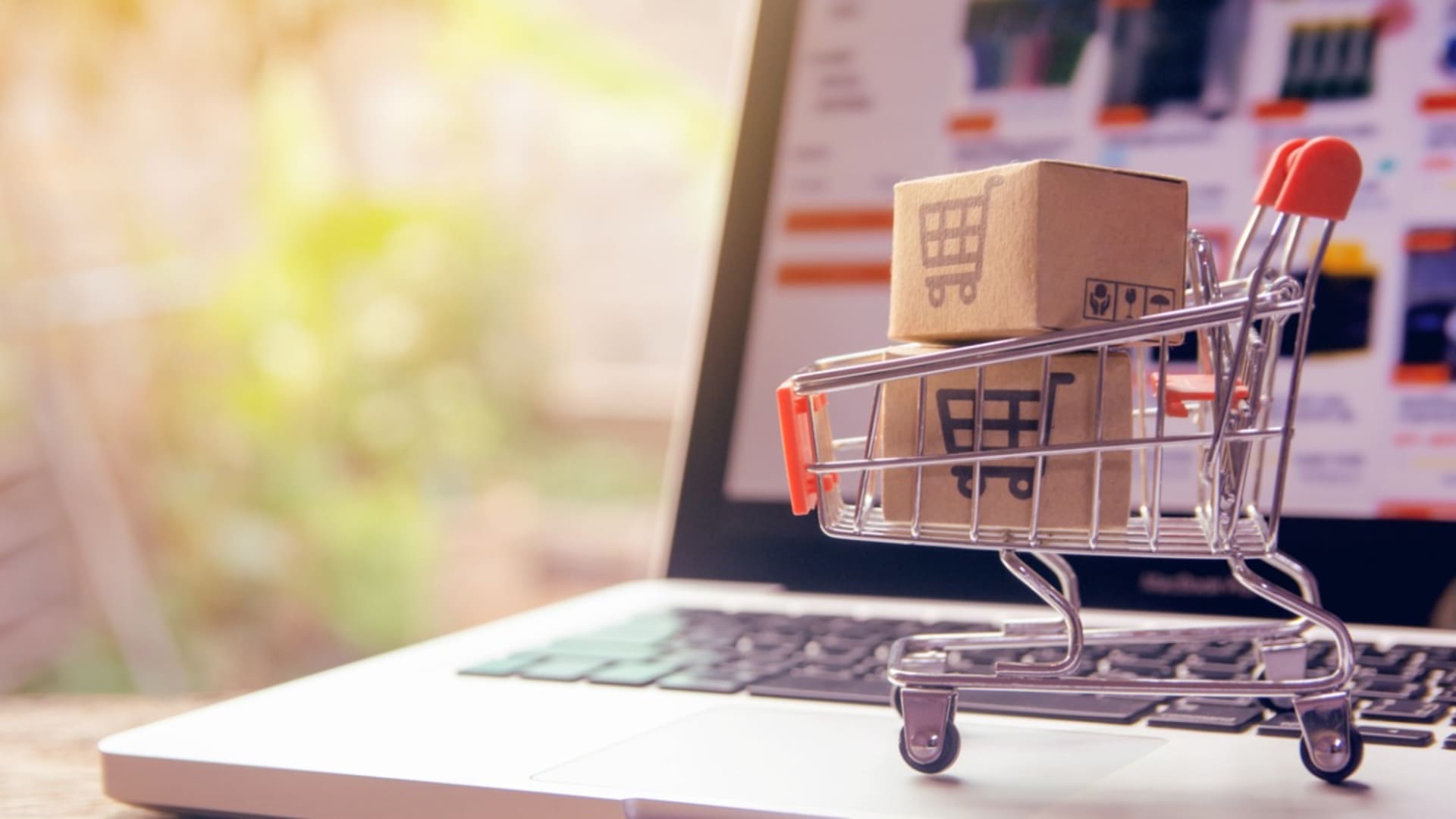The retail software development industry is undergoing a transformation driven by technological advancements and shifting consumer demands. eCommerce solutions, which have been around for many years, continue to evolve, with more options to explore products, better automated assistance, faster delivery, and seamless returns (see the video below for an overview of eCommerce). But that’s just the beginning of what technology is doing for retail.
Online marketplaces are allowing small retailers to get all the same advantages of large online companies. Social commerce takes convenience one step further by allowing businesses to enable social media users to buy directly from social media platforms. Immersive shopping is enabled by virtual and augmented reality (VR and AR). And mobile payments enable buyers to spend in ways that make the most sense for them.
Further, technologies like data analysis, chatbots, and omnichannel processes provide greater personalization to the shopping experience. And automation tools are making the entire shopping process faster and easier. Take a look at our recent white paper “How to Take your eCommerce Business to the Next Level” to find out about more technology and business trends in 2023; you’ll be sure to find something that fits your business needs. In the following sections, we explore technologies that retailers can leverage to meet evolving customer expectations, create seamless shopping experiences, and thrive in an ever-changing industry.
1. Online Marketplaces
One of the most familiar online marketplaces is Etsy, which enables small, even one-person, operations to sell items online, giving them an easy process to start, access to a large global audience, and built-in analytics tools. These advantages help small retailers find opportunities and compete with larger businesses. Recently, online marketplaces have also appeared on social media sites like Facebook, Instagram, Nextdoor, and Pinterest.
Online marketplaces can be horizontal, where shoppers can find a wide range of products and services across multiple categories, such as Amazon, Walmart Marketplace, and Alibaba. Alternatively, they can be vertical, meaning they are specialized in a particular category, such as electronics, collectibles, fashion, or home goods.
Service marketplaces enable shoppers to find services — such as repair technicians, freelancers, and movers — rather than products. Peer-to-peer marketplaces like Airbnb enable individuals to complete transactions between themselves. No matter what their origin or type, online marketplaces typically have some elements in common:
- Listings. At the heart of online shopping are the listings of products or services offered by the seller. They may include text descriptions, multiple images, videos, VR interaction, reviews, and pricing.
- Payment processing. Online marketplaces handle payment processing, enabling shoppers to securely pay for their purchases using a variety of methods, such as credit cards, Apple and Google Pay, PayPal, and payment plan arrangements. The online marketplace platforms also handle any transaction fees associated with each purchase.
- Marketing and promotions tools. Sellers can take advantage of features like SEO assistance, social media marketing, email marketing, automation, and competitor and product research. These tools are invaluable for helping smaller retailers compete with larger businesses.
- Reviews. Customers can rate their items and the associated customer care. Reviews help other customers make purchasing decisions and give sellers a data point to use in their promotions.
- Customer care. Online marketplace platforms offer support for both sellers and buyers. They answer questions, assist with issues, and mediate disputes.
2. Social Commerce
Social commerce can be considered as a part of online marketplaces, but it is worth mentioning separately because of its unique relationship with social media. According to TechTarget, social commerce “encompasses activities such as product discovery, reviews, ratings, sharing, recommendations, transactions, and loyalty programs.”
Companies that want to take advantage of social commerce must think of it as a separate sales channel and use strategies that allow customers to engage directly with their brand. This form of online sales employs user-generated content (UGC), such as photos, videos, comments, and reviews, to promote their offerings. This approach creates a new kind of relationship between companies and their customers, one that is deeper and more emotional. While it takes effort to maintain, it has the potential to drive greater loyalty and higher revenue.
Social commerce benefits from the continuing popularity and growth of social media platforms like Facebook, Twitter, YouTube, and TikTok and the influencers that use these sites. Shoppers enjoy some of the same social aspects that they like about these platforms, including the opportunity to see what family, friends, and strangers are doing and interactive opportunities such as question and answer (Q&A) functionality. Additionally, they appreciate having immediate access to and building relationships with the companies they purchase from.
3. Immersive Shopping
Interestingly, some of the processes being developed for online shopping do their best to imitate a physical shopping experience. Examples include detailed descriptions, multiple photos, videos, and Q&A functionality so shoppers know exactly what they’re getting. Now, technology, including machine learning services, has advanced to a point at which electronic shopping can feel even more immediate. Immersive shopping is the use of various tools — including AR, VR, AI, and chatbots — to help shoppers experience products on a more realistic level.
For example, a retailer might use an AR feature to help shoppers visualize a piece of furniture in their home or a piece of clothing on the buyer. Some retailers are even starting to use metaverse functionality to create online stores that mimic the experience of moving between departments and displays. Immersive shopping offers numerous benefits to retailers:
- Building trust. The more transparent retailers can be about their products, the more customers get exactly what they expected, and the more trust is built between the two.
- Better CX. Retailers can offer a better customer experience (CX) by using immersive shopping elements to provide personalized recommendations and assistance.
- Increased conversions. When customers are more confident in products based on their shopping experience, they are more likely to buy.
- Fewer returns. Because customers can be very confident in the purchases they make using immersive shopping, they are less likely to initiate returns.
- Higher profit. The three benefits mentioned above — improved trust, better CX, and increased conversions — all result in higher profit.
4. Mobile Payments
Mobile payments are payments made using a mobile device such as a smartphone, tablet, or watch. Several types of mobile payment methods are currently in use:
- Mobile commerce. Mobile commerce, also known as m-commerce, refers to any shopping activity, including paying for products or services, done on a mobile device. This often involves mobile app development, as customers may engage in shopping through a retailer’s regular website or, more frequently, through the company’s dedicated mobile app. Payments can be completed using a credit card, mobile wallet, or a buy-now-pay-later service like Klarna.
- Mobile wallet. Well-known mobile wallet services include Google Pay, Apple Pay, and Samsung Pay. Linked to customers’ bank accounts or credit or debit cards, they can be used on any kind of device, including computers, smartphones, tablets, and smartwatches.Brick-and-mortar establishments have terminals equipped with near-field communication (NFC) technology. To make a payment, customers tap their devices to a terminal. Online, customers enter their mobile wallet account information on the seller’s checkout page.
- Mobile peer-to-peer. Mobile peer-to-peer refers to forms of payment like Zelle, PayPal, Venmo, and CashApp that enable individuals to send payments to each other. They can also be used by small retailers and larger companies that want to ensure they are keeping up with customer preferences for a wide variety of payment options. SMS payments are another form used widely in many countries outside the U.S.
- Mobile points of sale. Mobile points of sale (mPOS) are useful for both retailers and shoppers in brick-and-mortar environments, as they enable customers to pay for purchases without having to go through the usual checkout process. When a staff member presents the mPOS device (such as a tablet), the customer inserts, swipes, or taps their credit card or taps their own device to complete the sale.
By using mobile payment methods, retailers provide better CX, thereby gaining greater trust and loyalty, which can in turn lead to higher revenue.
5. Personalization
Personalization is not a new concept, but it has evolved considerably in recent years. According to an Adobe Experience Cloud blog post, “In the past, retail personalization practices were viewed as a ‘nice to have’ marketing bonus. Today, customers expect personalization in retail. When this expectation is not met, most consumers (71%) become frustrated with the entire shopping experience.”
The idea is to provide a customized shopping journey for each customer based on their preferences and past purchases. This process provides benefits for shoppers and retailers alike. Shoppers get recommendations and suggestions that are tailored to their needs, making their experience more seamless and enjoyable, as well as less time-consuming. That experience translates to greater loyalty to the retailer, which leads to higher sales, revenue, and profit.
The technology that enables personalization is largely based on big data analytics, which delve into a variety of data points like purchase history, geographic location, and demographic information. Such analysis can be granular enough to infer why a customer purchased a particular product, and use that insight to tailor future interactions. The crux of successful personalization lies in its accuracy. For improving this process, the Adobe Experience Cloud blog post recommends the following steps:
- Prioritize good data. Ensure you have access to high-quality data and robust technology to support it.
- Enhance recommendations. Make recommendations more personalized.
- Personalize the entire journey. Don’t forget about the home page, landing pages, product pages, and cart/checkout page.
- Think outside the box. Something as simple as a thank-you note can go a long way toward forging loyalty.
- Don’t overwhelm customers. Be respectful of customers’ desire to share or not share data to enhance personalization.
- Utilize AI for extra insight. Take advantage of the potential for automated understanding.
6. Omnichannel
According to a recent Adobe blog post, “Omnichannel retailing is a commerce strategy that creates a seamless customer experience across multiple buying platforms.” It enables customers to move between digital spaces, such as their phone, their computer, and their tablet, and also between digital and physical spaces, such as brick-and-mortar stores. As they do so, they have a consistent journey with unified experiences. The Adobe post identifies three primary models that cross between digital and physical experiences:
- Online purchase, in-store pickup. Customers may do their shopping and purchasing online but pick up their purchase in person. This model works particularly well with regular purchases like groceries.
- In-store purchase, home delivery. The reverse of the previous model, this one enables customers to see and interact with the items in a store, then track the progress of the order and delivery online. This model works well for items that are difficult to transport, such as home furnishings.
- Online purchase, in-store return. At times, customers may make a purchase online, and rather than go through the hassle of shipping back a return, they may simply take the item they’re dissatisfied with back into the store. This method allows them to look for a suitable substitute for exchange.
Note that an important part of the process here is the brick-and-mortar experience. At times there is simply no substitute for interacting with a product in person. The key for retailers this year’s focus is to enhance that physical experience with digital solutions such as store maps or the ability to pay for purchases without going through a checkout line.
7. Automation
The pace of automation is increasing and bringing numerous benefits to retailers, including greater efficiency, a reduced need for spending on human labor, and improved CX. Given these benefits, retailers who want to continue to compete must decide how and where automation fits into their businesses. The options listed here are a good starting point for consideration.
- Drones. Within brick-and-mortar establishments, retailers can deploy drones to identify items that need to be restocked. This process is highly accurate, leading to just-in-time fulfillment, which results in happier customers and a better bottom line.
- Self-service kiosks. Busy brick-and-mortar stores can make good use of self-service stations to help customers locate items within the store, get answers to basic questions, place orders to be delivered, and get human help if needed.
- Robots. As one example, a major pharmacy chain is using robots that can fill prescriptions with high speed and accuracy. Similar uses will no doubt become more common in the coming months and years.
- Chatbots. These digital assistants can help customers with simple tasks, such as finding store locations, getting information about a product, or initiating a return. Another use for chatbots is providing personalized recommendations or visibility into inventory, which is another way to improve CX. Retailers still employ human customer care representatives to address more complex issues.
8. Data Analysis
In the past, retailers made decisions based on trends they observed, what they heard from customers, and sales numbers. But those information sources aren’t accurate enough to make appropriate choices about things like how much inventory to carry, what items will sell best, how to place displays to get customers to spend more, what types of customer service options work best, and where to locate new stores.
For these decisions and many more, retailers now rely on data analysis tools to provide granular information that leads to smart conclusions. There are several stages that occur before retailers can get those insights:
- Collect. Data analysis systems use numerous channels to collect information about customer preferences and behavior, inventory, trends, economic indicators, and more.
- Sort. Before it can be of use, data from various sources must be sorted to ensure it is free of errors and consistent with other inputs.
- Analyze. Next, data is analyzed to identify patterns and anomalies, enabling retailers to understand more about their customers and other factors influencing their business.
- Predict and recommend. Data analysis systems can use these insights in combination with other business information to predict what will be successful. Analysis and predictions are typically presented in a visualized format that is easy for reviewers to understand.
Data analysis takes the guesswork out of decision-making for much more accurate, fact-based outcomes. According to an Oracle article, such accuracy is highly important because “Retail is a highly competitive business,” and even small adjustments in things like product selection and inventory management “can have an enormous impact on the bottom line.”
Back to Basics
As we have seen, technology is having an enormous impact on how retailers do business. New tools are transforming the retail landscape from marketing to payments to showing potential customers what they have to offer. But retailers should keep in mind that all these solutions are truly just ways to perform the basic functions that customers need from them, including providing attentive service, delivering convenience, and making it fun. For example:
- Online marketplaces enable even small retailers to display their products in a way that is useful to customers, promoting ease of shopping and purchasing.
- Personalization is one aspect of offering good CX.
- Mobile payments enable customers to spend money in ways that work best for them.
- Omnichannel options create ways for customers to shop based on their own comfort.
- Social commerce is a way of engaging customers in a new way and delivering a new take on “shopping with friends.”
So, when considering which tools to employ, retailers should consider how new solutions will help them perform the most important function of all – forging trusting relationships with their customers.







